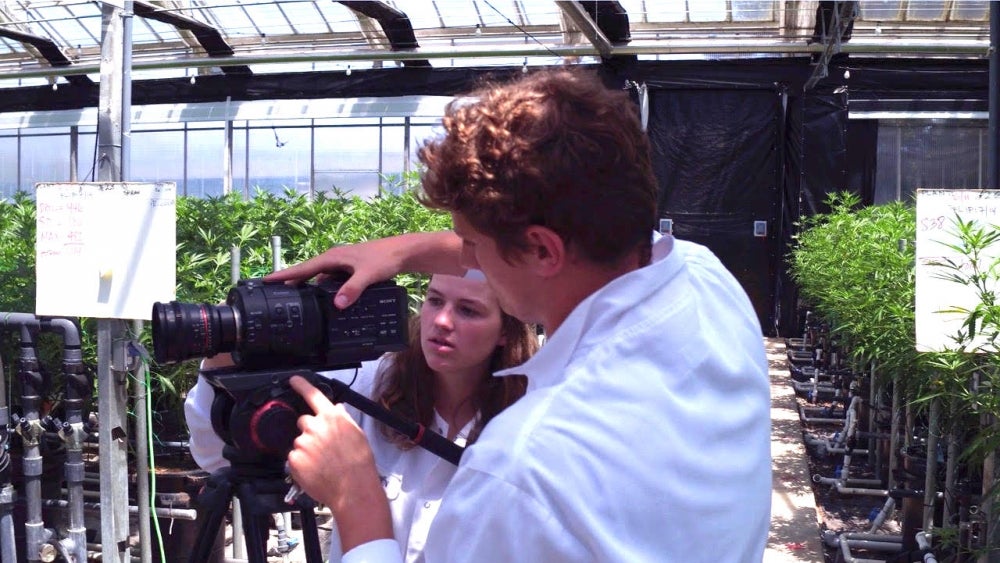
Blue Horizons


Richard Hutton has a favorite George Bernard Shaw quote: “The single biggest problem in communication is the illusion that it has taken place.” As a veteran educator and former high-level executive in major media corporations, he is acutely appreciative of the great playwright’s insight.
“When we say something or write something, we tend to think that people understand what we’re saying. That isn’t necessarily true,” he said. “I give the students techniques they can use as a kind of tool kit for communicating more effectively.”
The former executive director of UC Santa Barbara’s Center for Environmental Communication and Education, Hutton is currently one of the three instructors who oversee the Carsey-Wolf Center’s Blue Horizons Summer Program for Environmental Media. Now in its 13th year, this rigorous nine-week program tasks its students with conceiving and producing short documentaries on environmental issues facing California’s Central Coast.
The four films by this year’s 18-member class will screen at 7 p.m. Friday, Aug. 23, in the campus’s Pollock Theatre. The topics range from the controversy over cannabis cultivation in Carpinteria to the debate over Hollister Ranch beach access. Admission is free, but reservations are recommended.
“Scientists are frequently criticized for not being good communicators,” said Michael Hanrahan, a veteran documentary filmmaker who makes up another third of the program’s teaching staff. “Well, that’s not their job! We’re training young people in the language of science, while at the same time giving them a strong skill set they can use to communicate scientific stories.
“It’s a very intense program,” he added. “There are sleepless nights. At least half of these students have not had any kind of training in filmmaking, so the first six weeks is about learning how to do it.”
Hanrahan, who simultaneously earned degrees in marine science and in film at the University of Miami, created Blue Horizons when he came to UC Santa Barbara in 2007. When Hutton arrived in 2010, he refined the program into its current structure, in which the students — a mix of science and film majors — sort themselves into four- or five-person teams, each of which makes a short movie.
Kristi Birney, associate director of career development and alumni relations at the Bren School of Environmental Science and Management, helps the students come up with specific topics. Hanrahan teaches them the nuts-and-bolts of film production, while Hutton focuses on effective communication, including how to construct a strong narrative.
That requires “understanding their characters, and what’s at stake for those characters,” he said. “It’s also about exploring the conflict, and instilling the conflict with drama. If you do all of that well, odds are you will tell an effective story.”
“In order for them to communicate using imagery, they have to understand the language of film,” Hanrahan added. “We spend a lot of time teaching the value of a sequence, rather than just a montage of shots. In a sequence, one shot builds on the next, and they have a contagious impact. A montage is often an assembly of pictures that don’t connect narratively.”
Thanks to substantial support from Sony Pictures, “they have very good equipment to work with,” he noted. “We train the students using one of the same cameras I use in my professional work.”
The students, who are mostly from UC Santa Barbara — this year’s class also contained two from the University of Michigan — group themselves into teams after the third week. The teachers oversee the process, making sure each group contains both science majors and film majors such as Cameron Leingang, who will soon enter his senior year at UC Santa Barbara.
“It was really exciting to get to work with environmental studies majors and get their perspective,” he said. “The environmental studies majors learn how to film an interview and edit while the film majors learn about the environment and issues pertaining to our coast, something I would have never learned otherwise.”
Fellow participant Ily Logeais, also a film major, wholeheartedly agreed. “I am continually impressed by the dedication of my peers,” she said. “It really gives me a greater sense of responsibility to this earth, and to the stories I want to tell.”
Not all the students will go on to become documentary filmmakers, of course. But the program is structured to teach them skills that will serve them well in a variety of fields. The ability to share a message through a well-crafted story is worth cultivating, no matter what your career path.
Hutton noted that today’s students are more visually literate than those of past generations. “But they’ve also become habituated to screens,” he said. “It’s important that they stay sensitized. It’s important to have tools you can use to effectively purvey information — and to recognize when other people are using those same tools to give you information.”
Tickets to the screening can be reserved at https://www.carseywolf.ucsb.edu/pollock-events/blue-horizons-2019-premi….



